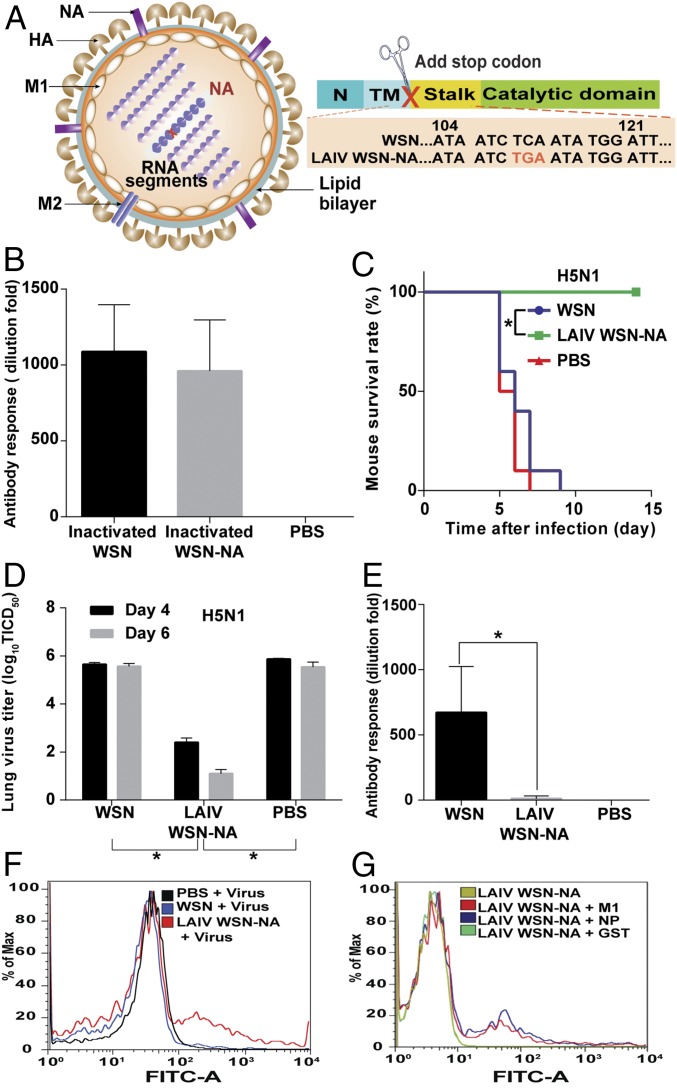Fig. 4.
Immunogenicity of LIAV WSN-NA. (A) Schematic overview of the LAIV WSN-NA design. The stalk and catalytic domains of NA were deleted by adding a stop code to the stalk domain of the RNA genome segment of NA, so the cells infected by the WSN without the stalk and catalytic domain cannot translate the stalk and catalytic domains of NA. Numbers refer to the nucleotide numbers from the 5′ end of the cRNA. Red TGA was the stop codon. N, N-terminal cytoplasmic domain; TM, transmembrane domain. (B) The sera of mice immunized with inactivated viruses as indicated were analyzed by using hemagglutination inhibition assay. (C) Analysis of the survival rate of WSN, LAIV WSN-NA, or PBS treatment mice after challenge with a lethal dose of H5N1. (D) H5N1 virus replication kinetics in the lungs of the treated mice as indicated on 4 and 6 postinfection days. (E) The sera of the treated mice were analyzed using hemagglutination inhibition assay to measure the antibody level. (F) After PBMC from WSN-, LAIV WSN-NA-, and PBS-treated mice were incubated with WSN virus (+virus), the analysis of INF-γ expression in CD8+ T cells was measured by flow cytometry. (F) Representative flow cytometry histograms of INF-γ expression in CD8+ T cells from LAIV WSN-NA–treated mice stimulated by M1 and NP epitopes. (B, D, and E) Mean ± SEM of 10 independent experiments. (C) Ten independent experiments are shown. (F and G) Data are representative of three similar experiments. *P < 0.001.

